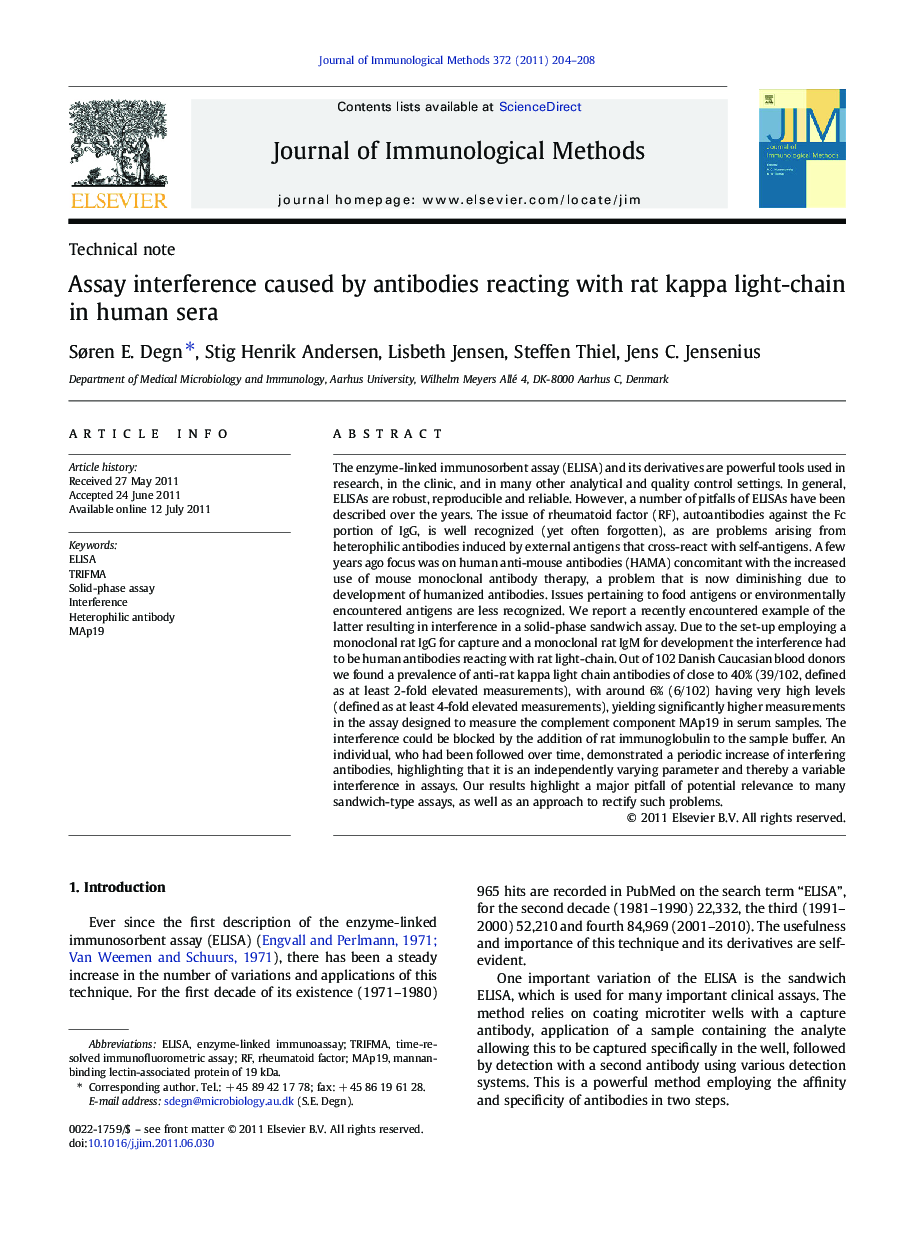| Article ID | Journal | Published Year | Pages | File Type |
|---|---|---|---|---|
| 2088440 | Journal of Immunological Methods | 2011 | 5 Pages |
The enzyme-linked immunosorbent assay (ELISA) and its derivatives are powerful tools used in research, in the clinic, and in many other analytical and quality control settings. In general, ELISAs are robust, reproducible and reliable. However, a number of pitfalls of ELISAs have been described over the years. The issue of rheumatoid factor (RF), autoantibodies against the Fc portion of IgG, is well recognized (yet often forgotten), as are problems arising from heterophilic antibodies induced by external antigens that cross-react with self-antigens. A few years ago focus was on human anti-mouse antibodies (HAMA) concomitant with the increased use of mouse monoclonal antibody therapy, a problem that is now diminishing due to development of humanized antibodies. Issues pertaining to food antigens or environmentally encountered antigens are less recognized. We report a recently encountered example of the latter resulting in interference in a solid-phase sandwich assay. Due to the set-up employing a monoclonal rat IgG for capture and a monoclonal rat IgM for development the interference had to be human antibodies reacting with rat light-chain. Out of 102 Danish Caucasian blood donors we found a prevalence of anti-rat kappa light chain antibodies of close to 40% (39/102, defined as at least 2-fold elevated measurements), with around 6% (6/102) having very high levels (defined as at least 4-fold elevated measurements), yielding significantly higher measurements in the assay designed to measure the complement component MAp19 in serum samples. The interference could be blocked by the addition of rat immunoglobulin to the sample buffer. An individual, who had been followed over time, demonstrated a periodic increase of interfering antibodies, highlighting that it is an independently varying parameter and thereby a variable interference in assays. Our results highlight a major pitfall of potential relevance to many sandwich-type assays, as well as an approach to rectify such problems.
► We report assay interference by human antibodies reacting with rat kappa light-chain. ► The prevalence was close to 40%, with 6% of blood donors having very high levels. ► The interference was blocked by addition of rat immunoglobulin to the sample buffer. ► Intra-individual levels of interfering antibodies vary over time. ► We highlight a pitfall of relevance to many sandwich assays, and present a solution.
